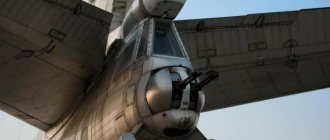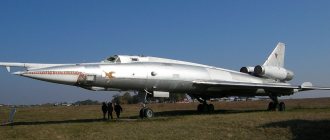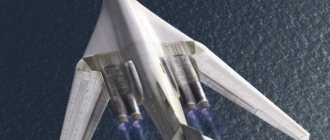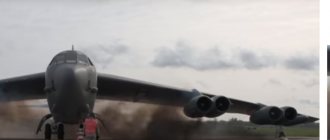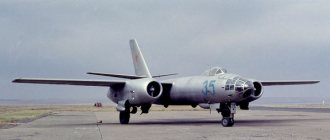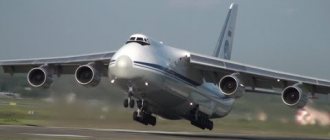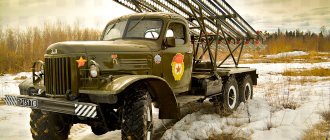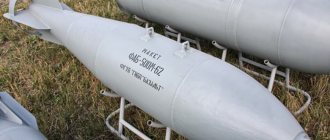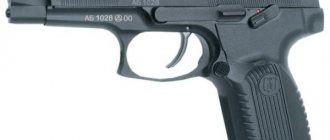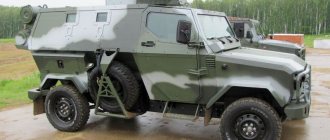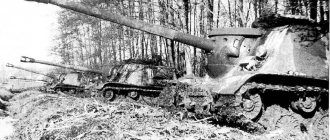Northrop B-2 Spirit is a heavy stealth strategic bomber. Designed to break through air defenses and destroy strategically important enemy targets.
In addition to the common name Spirit, or “Spirit,” each B-2 aircraft, like warships, was also given its own name in honor of American states. For example, an airplane with tail number 88-0332 was named “Spirit of Washington”, an airplane with tail number 89-0129 was called “Spirit of Georgia”, etc.
Peculiarities
The B-2 Spirit bomber is the crowning achievement of the American program to build an “invisible” combat weapon capable of delivering nuclear weapons anywhere in the world. The first steps in this direction were implemented in the Lockheed SR-71 supersonic reconnaissance aircraft, which, despite a number of innovative ideas, was still powered by jet engines. In addition, the SR-71 was characterized by low reliability. Thus, out of 32 aircraft built, 12 were lost as a result of accidents.
The B-2 Spirit bomber is one of the most unusual aircraft in aviation history.
The next qualitative breakthrough was the single-seat tactical stealth strike aircraft Lockheed F-117 Nighthawk, the panels of which reflected electromagnetic pulses away from enemy radars. However, the structural features of the F-117 hull did not allow it to reach supersonic speed, and in 2008 the expensive program was curtailed. A total of 64 of these aircraft were produced at a cost of US$112 million per unit.
Finally, the Northrop B-2 Spirit bomber, which was the pinnacle of engineering by American designers, was presented to the general public. Thanks to the original hull shape and special radar-absorbing coating, the B-2 Spirit bomber remains virtually invisible to enemy radars. To be fair, it is worth noting that the B-2 is not a full-fledged “invisible” aircraft, since, on the one hand, there are systems capable of detecting it, and on the other, the US is armed with aircraft that have better stealth characteristics.
Other combat features of the American bomber are also impressive, in particular the possible flight range, thanks to which the B-2 Spirit based in the United States is capable of attacking targets located far beyond the continent. For example, during the NATO military operation against the Republic of Yugoslavia in 1999, B-2 Spirit bombers flew non-stop from Whiteman Air Force Base (Missouri), where all B-2 combat and training aircraft are currently based, to Kosovo and back.
B-2 Spirit front view. Photoreactive cabin panels become opaque when exposed to strong light, such as a nuclear explosion
At the same time, the B-2 Spirit is also the most expensive aircraft in the history of world aviation. A total of 21 such bombers were built. The cost of each is 1.5–2 billion US dollars (taking into account inflation, the price of this aircraft in 2013 would be 10 billion US dollars). This was the main reason for the curtailment of the production program of these bombers.
Story
Strategic aviation (including strategic bomber aviation) began to fully develop with the advent of the Cold War. However, the heavy bombers of the Second World War can also be safely classified as strategic bombers:
- Lancaster bombers in service with the Royal Air Force of Great Britain.
- USAF B-29, B-24 and B-17.
- Soviet Pe-8 and Il-4.
These aircraft were used as strategic bombers during wartime. By the nature of its combat use, the Soviet Tu-4 also belonged to the class of strategic bombers.
During World War II, the design of intercontinental bombers began. The Japanese and German armies used such bombers (Nakajima G10N and Amerika Bomber) to carry out raids on US territory. The Americans, in turn, were designing an intercontinental bomber capable of carrying out raids on Germany in the event of England's surrender. The result of further developments was the appearance in the ranks of the US Air Force in the early 1940s. the first full-fledged strategic bomber B-36. This piston aircraft was unable to provide adequate resistance to jet fighters, despite its high flight altitude for that period. However, for a long time, B-36 bombers were the basis of US nuclear strategic forces.
Then the rapid development of this military equipment begins. After some time, strategic bombers equipped with nuclear and conventional weapons were constantly on combat duty, ensuring the guaranteed destruction of enemy positions in the event of war. In the post-war period, the main requirement that was put before the designers of strategic bombers was the ability to deliver nuclear bombs or missiles to enemy territory and return safely to their base. The main aircraft of this class during the Cold War were the Boeing B-52 Stratofortress (USA) and Tu-95 (USSR).
Design
Today, most of the characteristics of the B-2 Spirit bomber are state secrets, and therefore there is little reliable data on the design of the aircraft. The B-2 is made according to the “Flying Wing” aerodynamic design and does not have a vertical tail. Titanium and aluminum alloys and carbon fiber reinforced plastics are widely used in the airframe design.
The power plant consists of four General Electric F118-GE-100 high-temperature bypass turbojet engines specifically designed for the B-2 Spirit. The engines are installed in pairs on both sides of the central part of the hull. In order to reduce radar signature, the engine nozzles are made flat.
The B-2 Spirit avionics includes an AN/APQ-181 radar with an active phased array antenna, a laser warning system, and the latest navigation and communication systems with a low probability of signal detection. All B-2 Spirit bombers have access to the Pentagon's combat information and control system (CIUS).
The most expensive combat aircraft in aviation history takes off
Separate mention should be made of the bomber's electronic warfare system. Most sources indicate that the B-2 Spirit is equipped with the Northrop ZSR-62 electronic warfare system, which is superior in performance to all similar modern systems. However, work on this complex was stopped back in the 1980s. due to a number of technical problems, the solution of which required large financial costs. For this reason, the B-2 is currently equipped with the AN/APR-50 passive defensive electronic reconnaissance system from Lockheed Martin.
Tu-22M3
Photo: airwar.ru
The Tu-22M3 supersonic long-range bomber is designed to hit targets throughout the Eurasian continent and in nearby seas. Recently, the bombers were modernized and received completely new on-board electronics. The modernization carried out increased the bomber's capabilities in breaking through Aegis-type air defenses; the modernized bomber is often called the EuroPro killer. In addition, one of the strategist's purposes is to destroy aircraft carriers.
Photo: photofile.ru
The supersonic bomber's arsenal includes the Kh-32 cruise missile, which reaches speeds of more than 4,000 kilometers per hour and has a flight range of up to 1,000 kilometers. The speed of the missile-carrying bomber itself reaches 2300 km/h.
In addition to Russia, aircraft of the Tu-22M family were in service with the Ukrainian Air Force. However, at the moment, the Ukrainians have dismantled all of their 60 Tu-22Ms (17 Tu-22M2s and 43 Tu-22M3s).
Ukrainian Air Force Tu-22M3 is destroyed using equipment from the American company Raytheon Technical Services, Poltava airbase, 2002.
Armament
The B-2 Spirit bomber is capable of carrying both nuclear weapons and a wide range of tactical weapons, making it a versatile combat vehicle. For example, the B-2 can carry up to 16 of the latest B61-11 thermonuclear bombs with a yield of 340 kt each, or the same number of B-83 or AGM-131 SRAM II bombs.
The tactical armament of the B-2 bomber can be represented by high-precision guided bombs GBU-27, AGM-154 JSOW or JDAM, conventional bombs Mk. 82 or Mk. 84, CBU-87 or CBU-89 cluster bombs, as well as AGM-158 JASSM cruise missiles.
In order to maintain the high stealth characteristics of the B-2 aircraft, all weapons are located inside the hull. The maximum combat load of the B-2 bomber is 27 tons.
"Tu-95MS"
Photo: russianengineering.narod.ru
It is old, slow, turboprop and very noisy. It can be detected by any long-range radar, but this does not bother the Tu-95MS at all - the aircraft is armed with X-55 cruise missiles with a nuclear warhead, which can hit targets at a distance of 3000 km (SM modification). Therefore, it is not necessary for the Bear to enter the enemy’s air defense zone.
Photo: sdelanounas.ru
Low-speed - only 830 km/h - the Tu-95MS bomber has a high flight range (about 11 thousand km and a ceiling of 12 thousand meters). During a 17-hour flight, the Bear consumes 96 tons of aviation kerosene.
Photo: wikimedia.org
And the Tu-95MS, with its frequent appearances near NATO borders, is quite costly for the allies. The fact is that the safety margin of the outdated Bear airframe is simply huge, it will last for 20 years, but for the common NATO fighter F-16 this figure is 8000 hours, for the F-18 - 6000 hours.
Rockwell B-1 Lancer
Photo: topwar.ru
The Rockwell B-1 Lancer is the only aircraft in service with the US Air Force with a variable swept wing. The bomber's design uses composite materials that reduce the effective dispersion area. The front horizontal surfaces, edges of the wing, stabilizer and air intakes, as well as the bomb bay doors, are made of composites.
Photo: aircraftinformation.info
The joints of the airframe skin are sealed with a special tape, which is then covered with paint. According to the creators, the B-1 has unique characteristics of initial survival, surpassing the B-52 by 2-3 times according to some criteria. The Rockwell B-1 Lancer bomber can reach speeds of 1,328 km/h and carry 56 tons of bombs or missiles.
Notes[edit | edit code]
- Archived copy (unspecified)
(inaccessible link). Retrieved July 20, 2020. Archived June 9, 2020. - B-2 Bomber: Cost and Operational Issues (Letter Report, 08/14/97, GAO/NSIAD-97-181)
- PASSIVE MULTISTATIC RADARS IN ANTI-STEALTH AIR DEFENCE. By Lieutenant Colonel Paul E. Hudson, BSc, CD1 // Canadian Forces College (inaccessible link)
- B-2A Spirit (Retrieved June 5, 2013)
- Radar cross section: The measure of stealth // Military Embedded Systems
- ↑ 123
Program Acquisition Costs by Weapon System. Department of Defense Budget for Fiscal Year 1993. - January 29, 1992. - P. 22 - 124 p. - "Air Force names final B-2 bomber 'Spirit of America'." fas.org
, 14 July 200. Retrieved 16 June 2010. - B-2 Spirit (fas.org)
- Pace 1999, p. Appendix.
- "B-2." fas.org
. Retrieved June 16, 2010. - Lenta.ru: Science and technology: Weapons: USA restored B-2 bomber damaged by fire
- "Northrop Grumman Adding Mobile Targets to B-2 Bomber Capabilities." Northrop Grumman
, 7 February 2008. Retrieved: 13 September 2009. - “B-2 radar modernization program contract awarded.” US Air Force
, 30 December 2008. Retrieved: 13 September 2009. - "USAF Awards B-2 Radar Upgrade Production." (inaccessible link since 08/14/2013 [2521 days] - history
,
copy
)
Aviation Week
, 30 December 2008. Retrieved: 13 September 2009. - ↑ 1 2 3
Mayer, Daryl.
Northrop Grumman and USAF Verify Proper Fit of 30,000lb Penetrator Weapon on B-2 Bomber Archived August 21, 2009. defpro.com
, 22 July 2009. Retrieved: 13 September 2009. - The B-2 bomber will be freed from a 20-year problem
- B-2 bomber completes tests over the North Pole
- B-2 bombers received new radars
- ↑ 123
B-2 SPIRIT (af.mil) - B-2 Bomber: Cost and Operational Issues (Letter Report, 08/14/97, GAO/NSIAD-97-181)
- GlobalSecurity.org - B-2 Production (English).
- Myers, Dominique (2002), Acquisition Reform-Inside The Silver Bullet, Acquisition Review Journal
Vol. IX, no. 2 (Fall 2002): 312–322, . Retrieved September 1, 2007. Archived September 26, 2007 at the Wayback Machine - Air Force Magazine - Bombers over Libya (English). Archived from the original on June 3, 2012.
- Wired Magazine - Two Bombers, 24 Hours, 100 Libyan Targets Destroyed (English). Archived from the original on June 3, 2012.
- OPINION / A unique plane crashed (unspecified)
(inaccessible link). Retrieved February 23, 2008. Archived November 6, 2014. - News feed – PDA.AVIA.RU – Aviation news
- ↑ 12
February 23, 2008: droplets of water led to tragedy Archived February 3, 2014. - When You've Only Got 20 B-2 Bombers
- The $105M resurrection of a B-2 stealth bomber
- Northrop Grumman - B-2 Spirit Weapons (English). Archived from the original on June 3, 2012.
- ↑ 12
Flight characteristics of Tu-95 - ↑ 123
Ilyin V. E., Levin M. A. Bombers. — M.: Victoria, AST. 1996. - 272 p. Volume 1. P. 68 ISBN 5-89327-004-5 - North American Aircraft Rockwell International: B-1B - Fact Book, p. 12, Table A-1a. (English). Archived June 24, 2012.
- Congressional Budget Office: The B-1B Bomber and its Improvement Opportunities, p. 85/111, table A-1 (English). Archived June 24, 2012.
- National Museum of the United States Air Force: NORTH AMERICAN XB-70 VALKYRIE - Fact Page. Archived November 28, 2012.
- National Museum of the United States Air Force: B-1B LANCER - Fact Page.
- "Tu-160 Blackjack (Tupolev)." globalsecurity.org. Retrieved August 3, 2009.
- Tu-160
- B-1B (unspecified)
(unavailable link). Retrieved April 30, 2020. Archived April 2, 2020. - ↑ 1 2 3 The International Institute for Strategic Studies IISS.
The Military Balance 2010. - Nuffield Press, 2010. - pp. 40, 227, 228. - 492 pp. — ISBN 9781857435573. - The Military Balance 2010. p.-40
- Mehuron, Tamar A., Assoc. Editor. "2007 USAF Almanac - Equipment." Archived from the original on December 1, 2007. AIR FORCE MAGAZINE
, Journal of the Air Force Association, Vol.
90, Issue 5, May 2007, p.
62. ISSN: 0730-6784.
